| Modern Pulp | Feb 4 2023 |

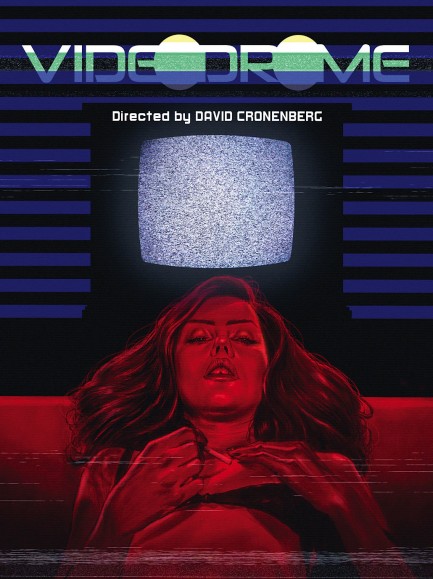
This is a cool little item that's been making the rounds on Twitter lately. It's the VHS box cover art for the horror flick Videodrome, directed by David Cronenberg and starring Debbie Harry and James Woods. As you know, we rarely post box art, but this one needed to be seen. The movie needs to be seen too—to be believed. It deals with a Toronto television producer who stumbles upon an illicit snuff channel, but finds that what's going on behind the broadcasts is even worse. It's Cronenberg at his weirdest. The movie premiered today in 1983.
| Vintage Pulp | Sep 20 2015 |

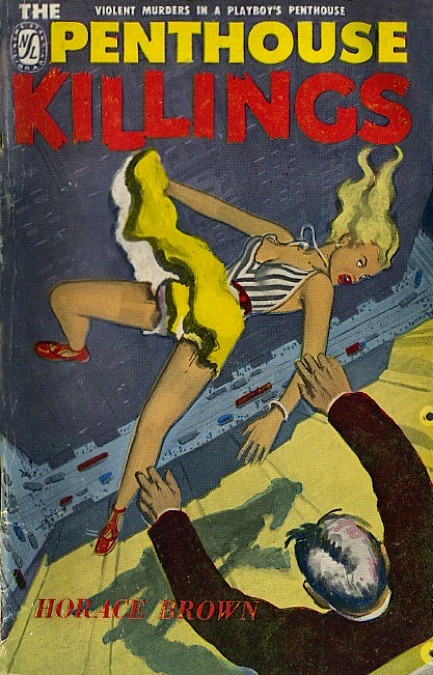
The comic book-like art isn’t of good quality, but we had to share this because it fits into the collection of falling covers we put together a while back. The Penthouse Killings was written by Horace Brown for Toronto based Newsstand Library in 1950. If you actually want to know why this ballerina is tossed off a building, check the detailed review here.
| Modern Pulp | Sep 11 2014 |

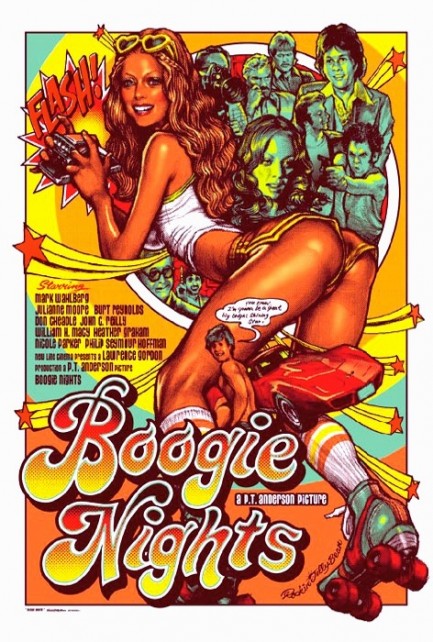
This promo for Boogie Nights was made last year for a Paul Thomas Anderson film retrospective hosted by the company Mondo, which markets limited edition screen printed posters for classic and contemporary films. The artist is the Japanese illustrator par excellence and constant enigma Rockin’ Jelly Bean. You can see this poster around the web with little difficulty, but we have a friend in Los Angeles who actually owns one and it really shocked us how off the colors are on every scan we’ve seen online. The above image, as oversaturated as it may seem, is close to correct. Even so, what appears as red is fluorescent magenta on the real poster, and the pale teal colors are closer to bright turquoise. Compare it to the shot below, which comes from the Mondo blog. The mild skin tones of the presenter tell us the colors of the entire image are true. Which means this is one blazingly garish poster, no? We love it. We could get one for as little as $300.00, but that’s still too rich for our blood. We wanted to share the image anyway, though, because Boogie Nights made its world premiere at the Toronto Film Festival today in 1997.
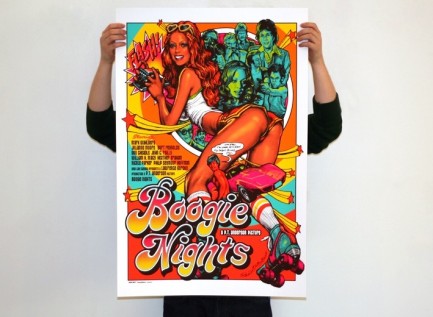
| Vintage Pulp | Aug 5 2013 |

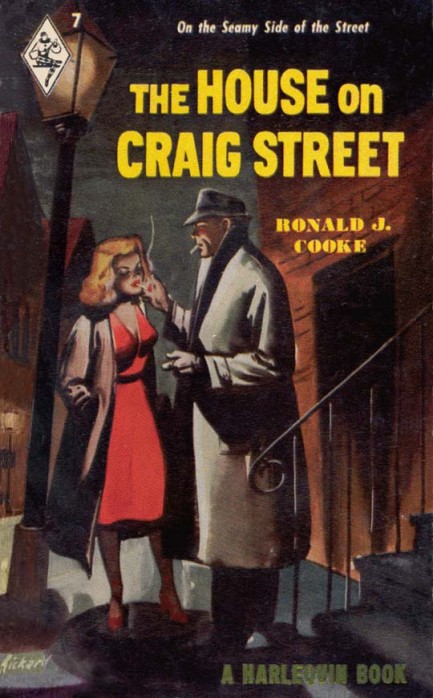
Above is a cover for Ronald J. Cooke’s The House on Craig Street, produced by an artist known only as D. Rickard for Harlequin in 1949. That’s the year Harlequin was launched in Toronto, Canada, and we gather that Rickard painted many of the company’s early covers. We had actually seen his work around quite often without knowing who painted it. But we always took note of it, and now that we've attached a name to the output, we’re officially on Rickard's bandwagon. His style reminds us of many of the French covers we share—i.e., verging on impressionistic, as opposed to the realistic work you see from many of the top American artists.
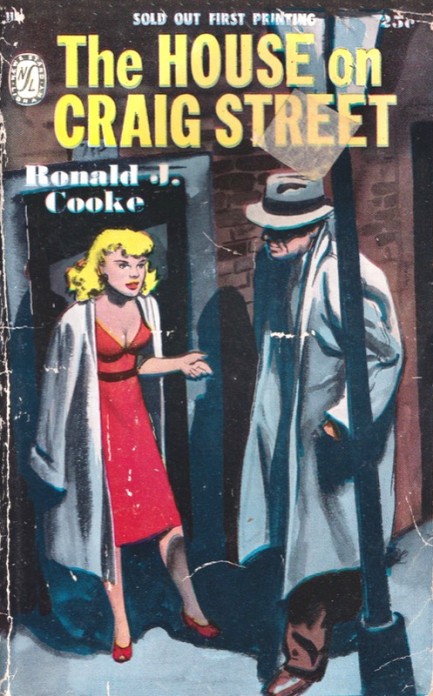 or even two, this book isn't one of the romances with which Harlequin earned its enduring fame. Cooke went on to write two more novels, and some non-fiction, including books like the popular Money-Making Ideas for Retirees. He also wrote tons of business articles for magazines and trade publications, exciting stuff like “How To Get Better Results for Your Mail-Order Business” and “Labour-Management Ideas That Yield Big Dividends.”
or even two, this book isn't one of the romances with which Harlequin earned its enduring fame. Cooke went on to write two more novels, and some non-fiction, including books like the popular Money-Making Ideas for Retirees. He also wrote tons of business articles for magazines and trade publications, exciting stuff like “How To Get Better Results for Your Mail-Order Business” and “Labour-Management Ideas That Yield Big Dividends.” | Hollywoodland | Aug 6 2011 |

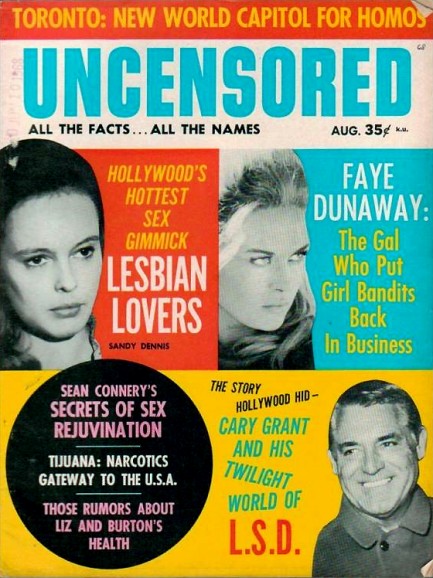
We’re back to the gossip magazine Uncensored today, with its info-packed cover telling us about gay Toronto, lesbian Hollywood, Sean Connery’s sex secrets and rumors about Liz Taylor and Richard Burton. But the standout item here (aside from the appearance of the non-word “rejuvination” and the misused term “capitol”) is the one on Cary Grant and his experimentation with LSD. Before the Beatles, Timothy Leary, and Carlos Castaneda, LSD was the drug of choice for a rarefied circle of glamorous elites who ingested it as part of their psychiatric therapy sessions. We’re talking about people as famous and diverse as aquatic actress Esther Williams, Time publisher Henry Luce, director Sidney Lumet, authors Aldous Huxley and Anais Nin, and composer André 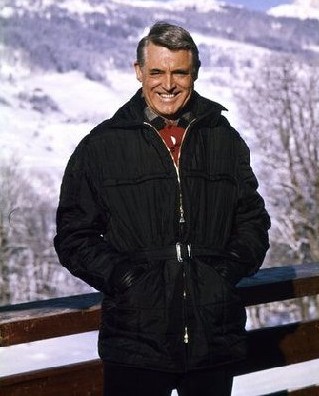 Previn.
Previn.
Cary Grant never tried to keep his LSD use secret. In fact, he spoke glowingly about it in a 1959 interview with Look magazine, saying that it had brought him close to happiness for the first time in his life. He also said that LSD taught him immense compassion for other people, and had helped him conquer his own shyness and insecurity.
But by 1968 the U.S. government—which had experimented extensively with LSD in hopes of using it as a truth serum or a form of chemical warfare, and had dosed thousands of people both willingly and unwillingly—was moving toward declaring the drug illegal. Grant’s wife Dyan Cannon had famously cited LSD usage as a primary factor in seeking a 1967 divorce, and the counterculture embrace of the drug was beginning to frighten middle America and the White House. That’s the backdrop against which this August 1968 Uncensored appeared, and by October of the year LSD was illegal. But the fact that public opinion had shifted—or more accurately, had been pushed by a steady, government-initiated anti-LSD campaign—did not particularly harm Grant’s public standing.
When he died in 1986 he was still one of the most revered Hollywood actors ever. And about his LSD usage he had no regrets. Quite the opposite—he commented: “Yes, it takes a long time for happiness to break through either to the individual or nations. It will take just as long as people themselves continue to confound it. You’ll find that nowadays they put you away for singing and dancing in the street. ‘Here now, let’s have none of that happiness, my boy. You cut that out; waking up the neighbors!’ Those darn neighbors need waking up, I can tell you, constable!”
| Intl. Notebook | Mar 29 2011 |

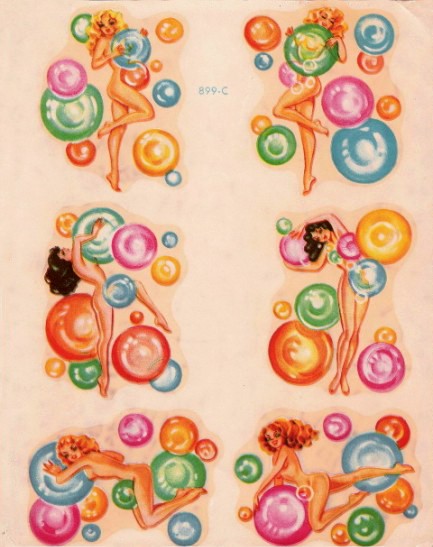
Here’s a sheet of “decal” transfer decorations (the term decal is apparently a trademark—who knew?) picked up for a couple of bucks in an Ontario antique shop. According to the directions on the reverse, these decals, design code 899-C, were made by Canada Decalcomania Co. Ltd., Toronto-Montreal. A code on the back, 47-9-48, may or may not indicate their vintage. The directions say there are two more designs available to complete this set. The search continues!
Submitted by Dave Lamb
Thanks for the share, Dave. These speak to a quintessential truth about men and alcohol—if a girl isn’t as beautiful as these decals by the first drink, she will be by the sixth.




































































